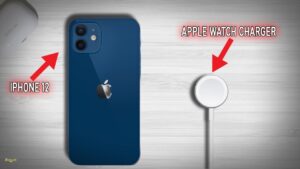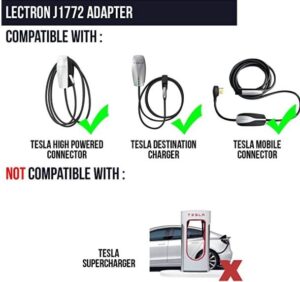Installing a Level 2 charger at home can be a game-changer for electric vehicle owners. Wondering how to make this upgrade? Look no further! In this article, we will guide you through the process step by step, ensuring that you have all the necessary information to tackle this project with ease. So, let’s dive right in and explore how to install a Level 2 charger at home, empowering you to charge your electric vehicle faster and more conveniently.
How to Install a Level 2 Charger at Home
Introduction
Installing a level 2 charger at home is a great way to enhance your electric vehicle (EV) ownership experience. Level 2 chargers provide faster charging times compared to standard level 1 chargers, allowing you to conveniently charge your EV at home without relying solely on public charging stations. In this comprehensive guide, we will walk you through the process of installing a level 2 charger at home, ensuring a seamless and efficient experience.
Why Install a Level 2 Charger?
Before diving into the installation process, it’s important to understand the benefits of installing a level 2 charger at home. Here are some key reasons to consider:
- Faster charging: Level 2 chargers provide higher charging power, allowing you to charge your EV more quickly. This is especially beneficial for those who have longer commutes or frequently use their EV for extended periods.
- Convenience: With a level 2 charger at home, you can skip the hassle of regular visits to public charging stations. You can simply plug in your EV overnight or whenever it’s convenient for you.
- Cost savings: Charging your EV at home with a level 2 charger is often more cost-effective than relying on public charging stations. It enables you to take advantage of off-peak electricity rates and potentially reduce your overall charging expenses.
- Increased range: Faster charging provided by level 2 chargers allows you to maximize your EV’s range. You can start each day with a full charge, giving you peace of mind for your daily travels.
Determining Your Charging Needs
Before installing a level 2 charger, it’s essential to assess your specific charging requirements. Consider the following factors:
Vehicle Compatibility
Ensure that your electric vehicle is compatible with level 2 charging. Most modern EVs are compatible, but it’s always a good idea to check your vehicle’s specifications or consult the manufacturer’s guidelines.
Power Availability
Check your home’s electrical system to determine if it can accommodate a level 2 charger. You will need access to a 240-volt electrical circuit, typically with a minimum capacity of 40 amps. If your home doesn’t have the necessary electrical capacity, you may need to upgrade your electrical panel or consult an electrician.
Location
Identify the optimal location for your level 2 charger. Consider factors such as proximity to your vehicle parking spot, accessibility to the electrical panel, and weather protection. Ideally, the location should be within a reasonable distance from both your electrical panel and your EV’s parking spot.
Choosing a Level 2 Charger
Once you’ve determined your charging needs, it’s time to select a level 2 charger that suits your requirements. Consider the following factors:
Charging Speed
Different level 2 chargers offer varying charging speeds. The charging speed is usually determined by the charger’s maximum amperage capacity. Higher amperage chargers provide faster charging times, but it’s crucial to ensure that your electrical system can support the selected charger’s power requirements.
Connectivity Options
Level 2 chargers often come with different connectivity options, such as a plug-in charger or a hardwired unit. Plug-in chargers are easier to install and can be moved if needed, while hardwired units provide a more permanent and streamlined installation.
Additional Features
Consider any additional features that may enhance your charging experience. Some level 2 chargers offer features like Wi-Fi connectivity, smartphone apps for monitoring charging status, or scheduling charging sessions. Evaluate these features based on your preferences and budget.
Installing the Level 2 Charger
Now that you’ve selected a level 2 charger, let’s dive into the installation process. It’s important to note that electrical work should be performed by a licensed professional. Hiring a qualified electrician will ensure safety and compliance with local electrical codes. Here’s an overview of the installation steps:
1. Obtain Necessary Permits
Check with your local authorities to determine if any permits are required for installing a level 2 charger. This is usually necessary when modifying your home’s electrical system. Your electrician can assist you in obtaining the required permits.
2. Assess Electrical Capacity
Your electrician will evaluate your home’s electrical capacity to ensure it meets the requirements for a level 2 charger. This may involve inspecting your electrical panel, checking for available circuits, and assessing the existing load on the system.
3. Install a Dedicated Circuit
Based on the assessment, your electrician will determine if a dedicated circuit is required for the level 2 charger. A dedicated circuit ensures that the charger has its own electrical supply, eliminating the risk of overloading existing circuits. The electrician will install a new circuit or upgrade an existing one if necessary.
4. Mount the Charger
Once the circuit is in place, the electrician will mount the level 2 charger at the chosen location. This typically involves securing the charger to a wall or post, ensuring it is positioned within reach of your EV’s charging port.
5. Connect the Charger
The electrician will then connect the charger to the dedicated circuit, ensuring all electrical connections are properly secured. The charger may be connected through a plug-in connection or hardwired depending on the model and your preference.
6. Test and Activate
After the physical installation, the electrician will perform thorough testing to ensure the level 2 charger is functioning correctly. This includes verifying the charger’s power supply, checking for any electrical issues, and testing the charger’s connectivity.
Maintaining and Troubleshooting
Once your level 2 charger is installed and activated, it’s essential to maintain it properly to ensure continued performance and safety. Here are some maintenance tips and troubleshooting steps:
Maintenance
- Regularly inspect the charger for any signs of wear, damage, or loose connections.
- Keep the charging area clean and free from debris to prevent any potential hazards.
- Refer to the manufacturer’s guidelines for any specific maintenance requirements.
Troubleshooting
If you encounter any issues with your level 2 charger, consider the following troubleshooting steps:
- Check the power supply to ensure the charger is receiving electricity.
- Inspect the charging cable for any signs of damage or defects.
- Verify that the charger is properly connected to your EV and that the charging port is clean.
- Refer to the charger’s user manual or contact the manufacturer for specific troubleshooting instructions.
Installing a level 2 charger at home is a valuable investment for electric vehicle owners. It allows for faster charging, increased convenience, potential cost savings, and improved range. By following the steps outlined in this guide and enlisting the help of a licensed electrician, you can enjoy the benefits of a level 2 charger and enhance your EV ownership experience. Get ready to charge your EV efficiently and effortlessly right at home!
Frequently Asked Questions
What is a level 2 charger?
A level 2 charger is a charging station that provides faster charging for electric vehicles (EVs) compared to a standard household outlet. It operates at a higher voltage and amperage, significantly reducing the time required to charge an EV.
Can I install a level 2 charger at home?
Yes, you can install a level 2 charger at home if you meet the necessary requirements. This includes having a dedicated circuit of sufficient capacity, access to a compatible power source, and adequate space for the charger installation. It is recommended to consult a licensed electrician to assess your home’s electrical system and determine the feasibility of installation.
Do I need to upgrade my electrical panel for a level 2 charger?
In some cases, upgrading the electrical panel may be necessary to accommodate the increased power demand of a level 2 charger. An electrician can evaluate your panel’s capacity and recommend any necessary upgrades, such as adding a higher amperage circuit breaker or a sub-panel for the charger installation.
Do I need a permit to install a level 2 charger?
The need for a permit to install a level 2 charger varies depending on your local regulations. It is advisable to check with your municipality or relevant authorities to determine if a permit is required. Obtaining the necessary permits ensures compliance with safety standards and local regulations.
How much does it cost to install a level 2 charger at home?
The cost of installing a level 2 charger at home can vary depending on various factors, including the complexity of the installation, the distance to your electrical panel, and any necessary upgrades. It is recommended to obtain quotes from licensed electricians to get an accurate estimate for your specific installation.
Can I install a level 2 charger myself?
It is generally recommended to hire a licensed electrician to install a level 2 charger at home. Electrical work can be complex and potentially dangerous if not done correctly. A professional will ensure proper installation, compliance with electrical codes and regulations, and provide necessary permits if required.
Final Thoughts
Installing a level 2 charger at home is an important step towards convenient and efficient electric vehicle charging. To begin, consult an electrician to assess your home’s electrical capacity and determine if any upgrades are needed. Next, choose an appropriate charger based on your vehicle’s needs and your budget. Obtain any necessary permits and ensure compliance with local building codes. Once everything is in order, a qualified electrician can install the charger safely and securely. By following these steps, you can successfully install a level 2 charger at home and enjoy faster charging for your electric vehicle.



